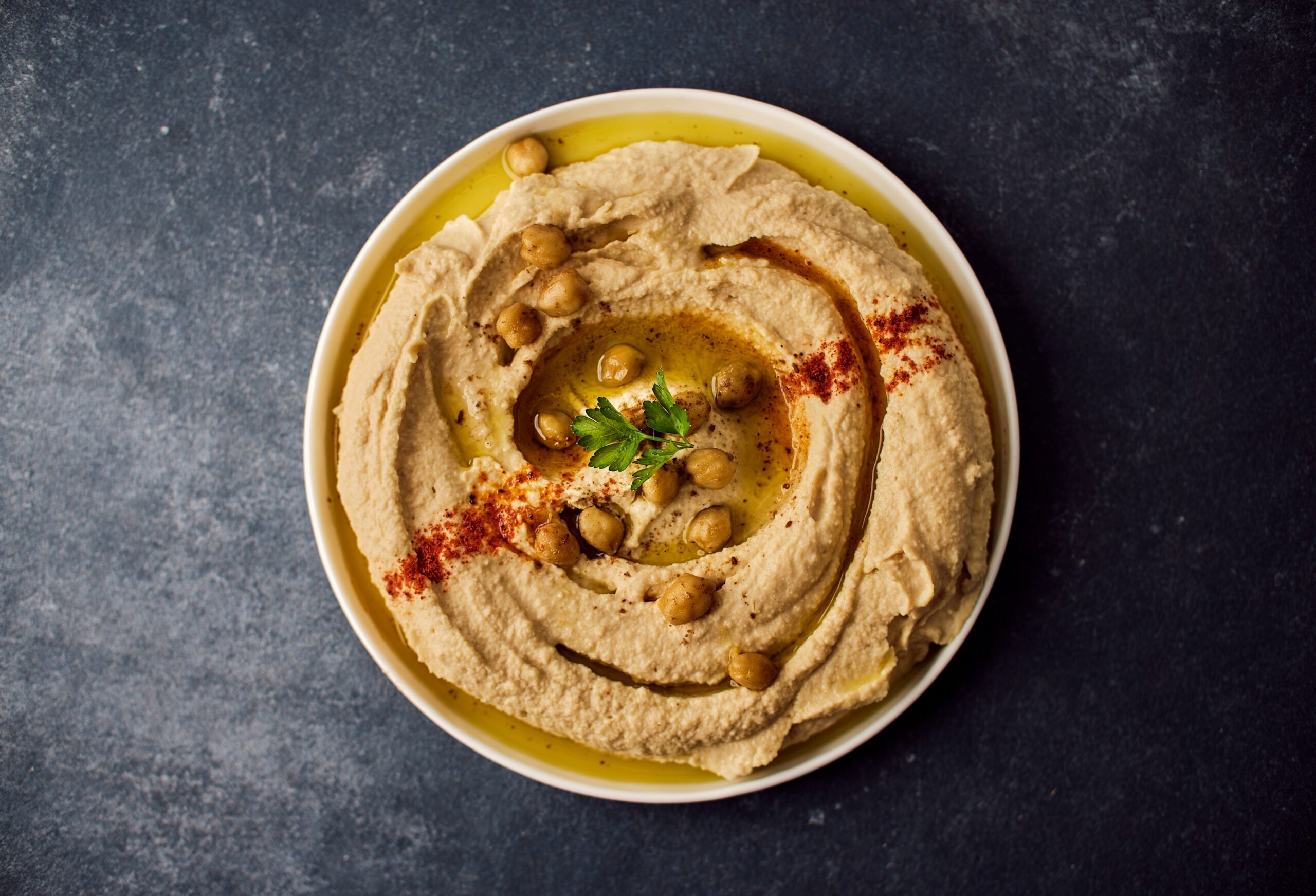When consumers think of snack food, hummus usually isn’t the first condiment or spread to come to mind. But the hummus market is poised for disruption – at least according to Ithaca Hummus founder and CEO Chris Kirby – who sat down with FI to discuss the opportunity he sees in the greater grocery and retail markets.
Kirby has been in the hummus game for over a decade. He started Ithaca Hummus in 2013 at the Ithaca Farmers Market with a lemon garlic variety he adopted from a Lebanese chef and colleague who used to make it for the staff on Sundays – “a vibrant, zesty flavor,” Kirby recalled, “I fell in love with the taste and texture.”
But why hummus? And why now?
Kirby said the answer is simple: the category could be so much better, and he believes Ithaca is the brand to make it so. Kirby said that the hummus category is crowded though it doesn’t offer much in the way of variety nor superior taste and texture for most consumers; he knows he’s No. 4 in the category behind Sabra, Cedar, and Boar’s Head.
“We are absolutely positioned as the premium brand in the category. What makes our products different and special is simply the way that it tastes – you get this fresh texture and something you’d expect from a homemade or restaurant-quality product, and we achieve that with fresh ingredients; fresh-squeezed lemon juice, fresh garlic.”
Kirby said their all-cold process also helps set Ithaca apart. The chickpeas are chilled, pressed cold, and batched cold as well. “It’s a combination of the freshest raw materials coupled with the cold process,” he said, “and that combination delivers a fresh-tasting texture totally unmatched by anyone else in the category.”
Kirby said the category average is about four times per year, usually around holidays and large gatherings – Christmas, Memorial Day, 4th of July, Labor Day, etc. Ithaca consumers, however, shop the category almost nine times per year, more than double the casual hummus consumer.
Numerator data notes that the American hummus market remains fairly static at $700 – $800 million per year. Kirby believes Ithaca can help propel the market to over $1 billion annually, however, due to a few simple differences in his process and product.
He may not be far off – Verified Market Research predicts the domestic hummus market to reach $1.7 billion by 2030, growing at a compound annual growth rate (CAGR) of 8.98% from now until then.
That’s a lot of chickpeas. That’s a lot of hummus.
Overcoming the Flavor Barrier
When Kirby asked what my general experience with hummus has been like, I answered as honestly as I could: mostly unremarkable. Good, but not great. His response surprised me:
“You’re spot on,” he admitted.
“We have a huge opportunity to come behind the brands that have existed for a long time and just blow the socks off people with a product that’s better,” noting that a recent launch of French Onion hummus tastes exactly like its sour cream equivalent. Jalapeno lime is another popular flavor – especially in the summer of swicy – and Kirby is convinced the growing market share of Ithaca means more consumers are going to try something and become excited about the category.
Kirby said the main problem for many consumers is one of history and optics. Hummus doesn’t change much from brand to brand, yet many consumers note a huge difference between restaurant-quality hummus and what they have access to in the store. By offering what he sees as a superior product, Ithaca has grown from its northeast roots and is now stocked in over 8,000 stores nationwide, including Wegmans, Sprouts, Whole Foods, and Publix.
The Value-added Benefits of Hummus
Another reason Kirby was attracted to the hummus market is that it checks a lot of boxes for today’s health- and eco-conscious consumers.
“From a supply chain perspective, chickpeas are a super crop that play an integral role in the regenerative agriculture process,” he said.
“Along with other legumes, they add nitrogen back to the soil opposed to cash crops like wheat and corn that take nitrogen out. Without chickpeas in the crop cycle, it’s difficult to get nitrogen back into the soil. Chickpeas are good for the earth, and we source sustainable chickpeas.”
Another aspect Kirby says is often overlooked by consumers is just how vital hummus can be in fostering a healthier diet, noting that hummus that packs a punch flavor-wise can be a great vehicle to better nutrition.
“I eat way more raw vegetables, for example, when I have hummus in the fridge – really good hummus that can stand on its own. For me, it’s a diet/health hack that’s veggies’ best friend. A good hummus combined with veggies can more or less provide a whole, healthy meal or snack and help me feel satisfied from a craving perspective.”
According to Brightfield research group, the top need states searched online with hummus over the past three years are functional health, digestive health, and sustainability, while the top nutrition states are low sugar, low carb, and high protein – all benefits from the humble chickpea.
Like anyone in the foodbev space, Kirby is keenly aware of the market’s opportunities as well as its limitations, noting that hummus of any kind generally struggles to reach over 20% household penetration at any time.
“People have an assumed standard of identity for hummus; it is mostly unremarkable,” he reiterated. “It’s not a flavor experience that people get excited about in its current state, and that’s what we bring to the table – we’ve carved out a niche around superior-quality hummus, and that’s what we’ll continue to do.”
“Hummus is the original plant-based dip,” he mused. “There are myriad benefits to not just personal health but environmental health. We get excited about our opportunity to contribute to both.”
The Food Institute Podcast’s “Foodservice Gamechangers” Series
Get to know the men and women behind the scenes of foodservice distribution in a new, limited series from The Food Institute Podcast called “Foodservice Gamechangers.” Recently, Pat Mulhern, advisor to The Food Institute, sat down for brief conversations with seven of the most influential foodservice merchandising and distribution leaders. Highlighting their food career journeys and management styles, the conversations feature insightful thoughts on what may lie ahead for manufacturers, distributors, and operators in foodservice.










